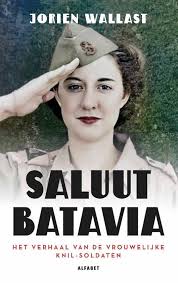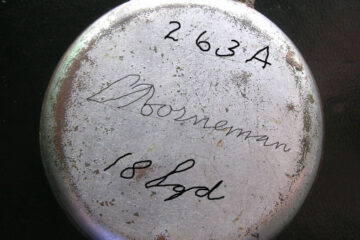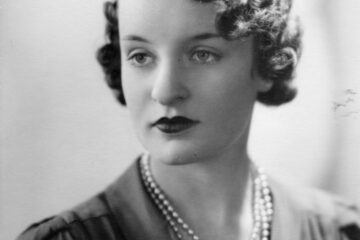
In October 2024, Dutch journalist and copywriter Jorien Wallast published a groundbreaking work titled Saluut Batavia: Het verhaal van de vrouwelijke KNIL-soldaten (Salute Batavia: The story of the female KNIL soldiers), offering a rare window into a little-known facet of Dutch post-war military history. This non-fiction book explores the experience of young women who joined the Vrouwenkorps KNIL (Women’s Corps of the Royal Netherlands East Indies Army) during the chaotic transition from Japanese occupation to the Indonesian independence struggle in 1945.
While much has been written about the military and political strategies of the Dutch reoccupation of the East Indies, Wallast’s book uniquely centres on the lived experiences of five young women sent to Java—unarmed, largely unprepared, and caught in the fraught aftermath of empire.
Female service in a colonial military context
The book opens in September 1945, just weeks after Japan’s surrender. Dutch authorities were scrambling to re-establish colonial control over the East Indies. While British and Australian forces provided logistical support, the Netherlands began deploying KNIL troops to Java. Among them was a contingent of female volunteers from the Vrouwenkorps KNIL, a small but symbolically significant unit within the broader Dutch military apparatus.
Wallast reconstructs the stories of five such women: Mimi and Tilly from Curaçao, Claar and Betty from Leiden, and Tjits, a young woman searching for her brother. Each comes with different motivations—patriotism, a thirst for adventure, a desire to serve, or personal reasons shaped by war and loss. Their backgrounds span the diversity of the Dutch empire, and their interactions with Indonesian civilians, Dutch soldiers, and Allied forces reveal the ambiguities of their roles.
Journalism, memory, and family history
Wallast’s interest in this subject is deeply personal. Her earlier NPO podcast Mijn oma de soldaat (My grandmother the soldier) traced her own grandmother’s service in the KNIL and served as a foundation for this book. The research combines archival material, personal letters, and oral history, resulting in a vivid and empathetic narrative.
While the book draws from military records and official histories, it deliberately avoids a dry chronological account. Instead, it paints a layered picture of post-war Batavia (now Jakarta), including encounters with Indonesian independence fighters, British Gurkhas, and Dutch officers returning from internment. The women navigate unfamiliar terrain, rapidly shifting power structures, and deep moral dilemmas.
Colonial silence and gendered erasure
One of the most compelling aspects of Saluut Batavia is its exploration of historical silence. Wallast notes that even in Dutch historiography, the female KNIL soldiers have been largely forgotten—overshadowed by male military figures and by broader debates about decolonisation and national identity.
This silence is compounded by gender. Although the Vrouwenkorps KNIL was officially recognised, its members were often treated as symbolic or ornamental. Many were denied proper training, weapons, or clear roles. Their presence served political and propaganda functions more than military ones.
Wallast challenges this marginalisation by documenting their full humanity: the fear, courage, boredom, resilience, and trauma that characterised their service. She also highlights how many struggled with their place in a war that no longer felt like liberation, but increasingly like colonial repression.
Relevance to Dutch-Australian heritage
Although Saluut Batavia does not specially explore the role of Vrouwenkorps KNIL personnel in Australia, their presence and activities here formed a significant, if often overlooked, chapter of Dutch-Australian wartime history. From late 1944 onwards, women from the Netherlands East Indies Women’s Corps were stationed and trained at Camp Columbia in Wacol, Brisbane—alongside male KNIL soldiers, members of the NEI government-in-exile, and Allied forces.
Articles published on their website have highlighted the stories of several of these women. For instance, Jean van Schilfgaarde recalled her time in Brisbane as both formative and disorienting. She underwent military training and clerical duties, often under challenging conditions and with limited recognition from their Dutch male counterparts. We also have a photo collection of KNIL woman Anne Beetstra, while working at Camp Columbia. More insights on the Vrouwenkorps is also provided in the story of Joan van-Embden-Butler.
These women were not combatants, but they played vital roles in supporting operations through clerical work, communications, and medical services. Their contributions in Australia were part of a broader Dutch military effort to regroup and prepare for the return to Java and Sumatra after the Japanese surrender. This included logistical coordination, intelligence processing, and administrative functions within a uniquely multicultural Allied environment that included Australians, Americans, and British units.
Their stories shed light on the transitional period between colonial governance and decolonisation, and they help illustrate the broader role of Dutch military forces—both male and female—in Australia during the final stages of the Pacific War. Importantly, many of these women developed lasting ties with Australia, and some returned post-war as migrants, becoming part of the emerging Dutch-Australian community.
Through their presence at Camp Columbia and other Australian bases, the women of the Vrouwenkorps KNIL left behind a legacy that forms an integral part of the shared Dutch and Australian wartime heritage—one that is now gradually being reclaimed through community memory, historical research, and public exhibitions.
Conclusion
Saluut Batavia is a timely, courageous, and well-crafted book that deserves a wide readership. Jorien Wallast has recovered a neglected chapter of Dutch military history and given voice to women who were sent to war, often without understanding their place in the geopolitical theatre unfolding around them.
As debates about colonial history continue to evolve in the Netherlands and Australia, books like Saluut Batavia help expand the conversation to include the intimate, the uncomfortable, and the largely unknown.


